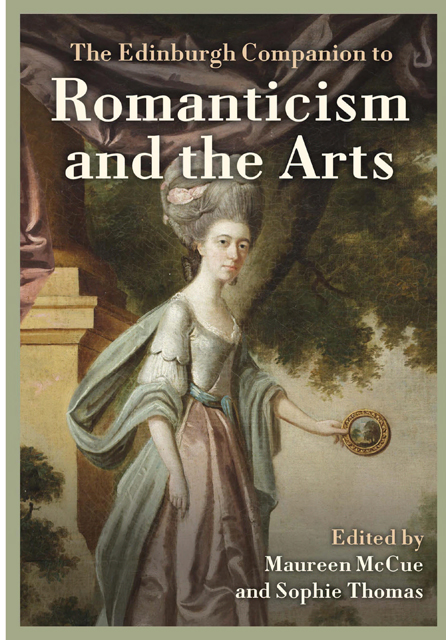3 - Aesthetic Landscapes: Travel and Tourism
Published online by Cambridge University Press: 25 April 2023
Summary
The connections between Romantic-period travel, travel writing and the visual arts are deep and intricate, and have afforded a rich field for research across a range of disciplines. At the most instrumental level, ‘Art’ provided a major impetus for British travellers to the Continent. The appreciation of Old Masters and the ability to sketch and interpret classical ruins formed an important educational strand of the aristocratic Grand Tour, as did the acquisition of paintings and antiquities to grace newly designed estates back home (Buzard 1993; Chard 1999; McCue 2014). Artists such as Richard Wilson or Thomas Jones, who spent time in places such as Rome and Naples, brought a similar classicising perspective to their treatment of British landscapes, often infusing them (as Wilson does in fig. 3.1) with a Mediterranean light (Postle and Simon, 2014; Solkin 1982). This in turn encouraged domestic tourists to adopt and develop an aesthetics of place which referenced foreign travel: Edinburgh as the Paris of the North; Snowdonia as the British Alps (Piozzi 1789; Cramsie 2015).
Yet there was, throughout the eighteenth century, a parallel strand of thought which stressed the importance of appreciating the landscapes and antiquities of Britain on their own terms (Sweet 2004). As the president of the Society of Antiquaries, Richard Gough, put it: ‘Temples and palaces of the polite nations of antiquity engross our attention, while the works and memorials of our own priests and heroes have no effect on our curiosity’ (Gough 1768, xxi). Gough was a driving force behind an antiquarian movement which aimed to make accurate visual records of neglected ancient monuments. Travel was fundamental to his project, and he urged friends and colleagues to follow his example and ‘ramble about and to examine every remnant of antiquity’; employing a good draughtsman was crucial (xxii). In this respect, antiquarian travel was not dissimilar to the work of topographers and natural historians, all working more or less to the Enlightenment imperatives of the Royal Society, which urged empirical, first-hand observation of natural phenomena, backed up with sketches and detailed notes (Smethurst 2012; Thompson 2011, 77–9). The published Tours in Scotland and Wales of the naturalist and antiquarian Thomas Pennant brought this observational style of writing to audiences well beyond scientific or scholarly communities, and encouraged many domestic travellers to make their own journeys.
- Type
- Chapter
- Information
- The Edinburgh Companion to Romanticism and the Arts , pp. 58 - 76Publisher: Edinburgh University PressPrint publication year: 2022



